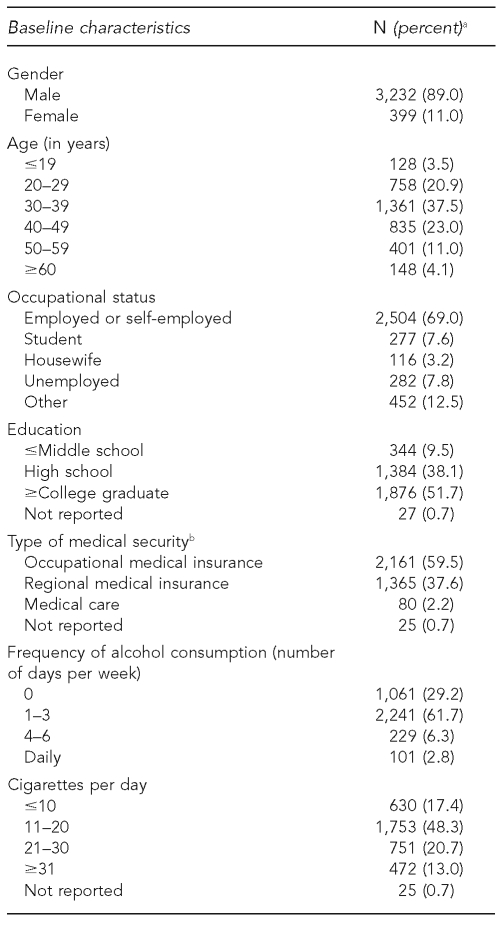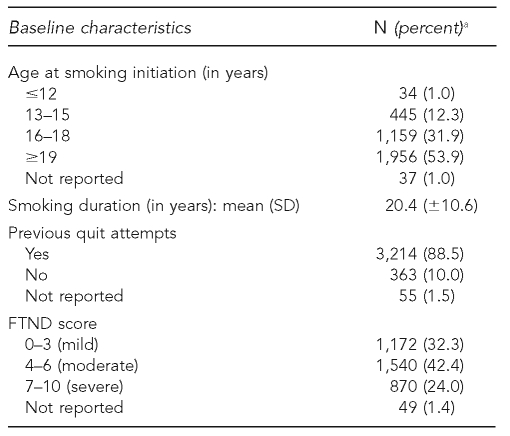Table 1.
Baseline sociodemographic and smoking-related characteristics of participants in the Korean quitline service who had set a quit day and whose quit day had elapsed in the previous 12 months (n=3,631): South Korea, 2006–2007
aBecause of rounding, not all percentages add up to 100.
bThe medical security system in Korea, which is compulsory, comprises two major programs: medical insurance and medical care. Medical insurance is divided into occupational medical insurance for the employed, and regional medical insurance for the unemployed or the self-employed. Medical care is sponsored by the Korean government for low-income people.
SD = standard deviation
FTND = Fagerstrom Test for Nicotine Dependence


